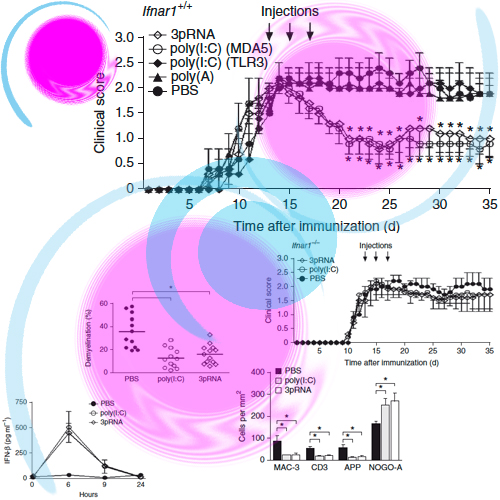Cytosolic RIG-I–like helicases act as negative regulators of sterile inflammation in the CNS
09-Feb-2012
Nature Neuroscience, 2012, 15, doi:10.1038/nn.2964, 98–106, published on 09.02.2012
Nature Neuroscience, online article
Nature Neuroscience, online article
The action of cytosolic RIG-I–like helicases (RLHs) in the CNS during autoimmunity is largely unknown. Using a mouse model of multiple sclerosis, we found that mice lacking the RLH adaptor IPS-1 developed exacerbated disease that was accompanied by markedly higher inflammation, increased axonal damage and elevated demyelination with increased encephalitogenic immune responses. Furthermore, activation of RLH ligands such as 5'-triphosphate RNA oligonucleotides decreased CNS inflammation and improved clinical signs of disease. RLH stimulation repressed the maintenance and expansion of committed TH1 and TH17 cells, whereas T-cell differentiation was not altered. Notably, TH1 and TH17 suppression required type I interferon receptor engagement on dendritic cells, but not on macrophages or microglia. These results identify RLHs as negative regulators of TH1 and TH17 responses in the CNS, demonstrate a protective role of the RLH pathway for brain inflammation, and establish oligonucleotide ligands of RLHs as potential therapeutics for the treatment of multiple sclerosis.











